Coleus plants are beloved for their dazzling foliage, ranging from lime green to deep burgundy, often patterned with streaks of red, pink, or yellow. These tropical beauties bring bold color to garden beds, patio containers, and even indoor spaces, making them a favorite for both novice and experienced gardeners.
Native to Southeast Asia, coleus plants thrive in warm, humid environments. With the right care, they grow quickly and can fill out any space with lush, vibrant leaves. Whether you’re planting in shade gardens or bright indoor corners, understanding how to care for coleus plants will help you enjoy their color all year long.
Table of Contents
Coleus Plant Care
Light Requirements
Most coleus plants prefer partial shade, especially during the hottest part of the day. While some newer varieties can tolerate full sun, too much direct sunlight can bleach or scorch their leaves. For best results, place them where they receive bright, indirect light or morning sun with afternoon shade. Always check the plant tag for specific light needs based on the variety you’re growing.
Watering Coleus Plants
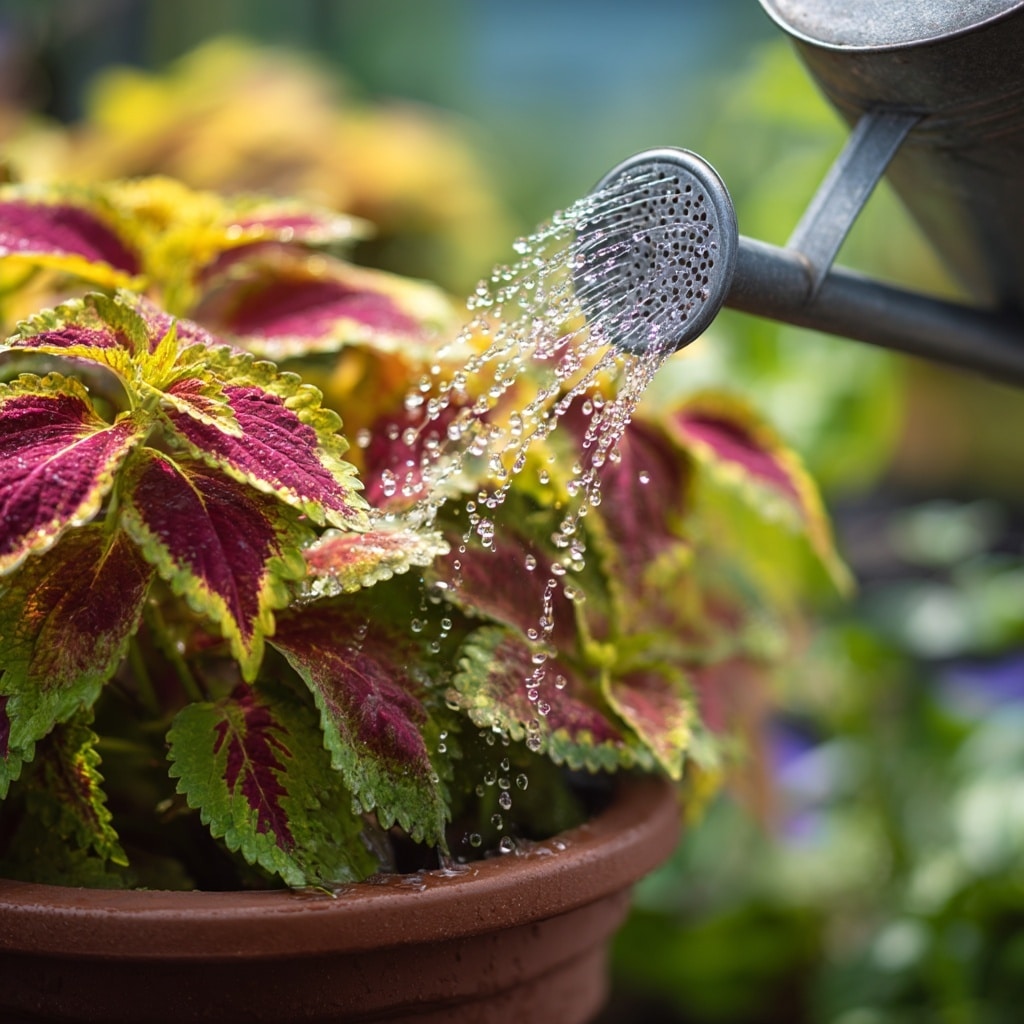
Consistent moisture is key to keeping coleus plants happy, but soggy soil can lead to root rot. Water when the top inch of soil feels dry to the touch. In containers, ensure they have proper drainage holes. During hot spells or if grown indoors with dry air, you may need to water more frequently to maintain humidity and prevent wilting.
Temperature and Humidity

As tropical plants, coleus thrive in warm, humid conditions. Ideally, daytime temperatures should stay above 60°F (15°C). If the temperature drops too low, especially below 50°F (10°C), the plant may become stressed or stop growing altogether. For indoor coleus, place them away from drafts and provide extra humidity with a pebble tray or humidifier if your home is dry.
Soil Needs
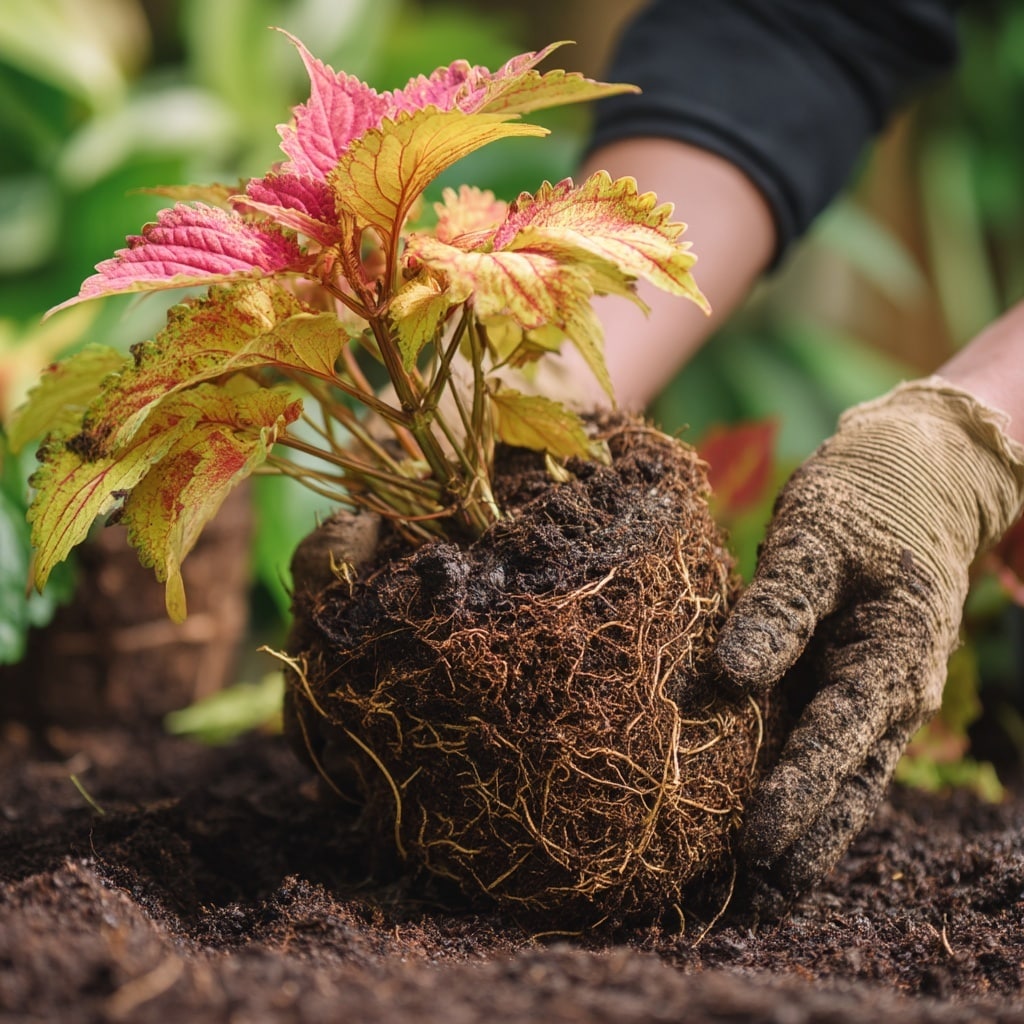
Coleus plants perform best in fertile, well-draining soil rich in organic matter. For garden beds, amend the soil with compost or peat moss before planting. For containers, choose a quality potting mix that retains moisture but drains well. Avoid heavy, compacted soils that can lead to waterlogged roots.
Fertilizer Tips
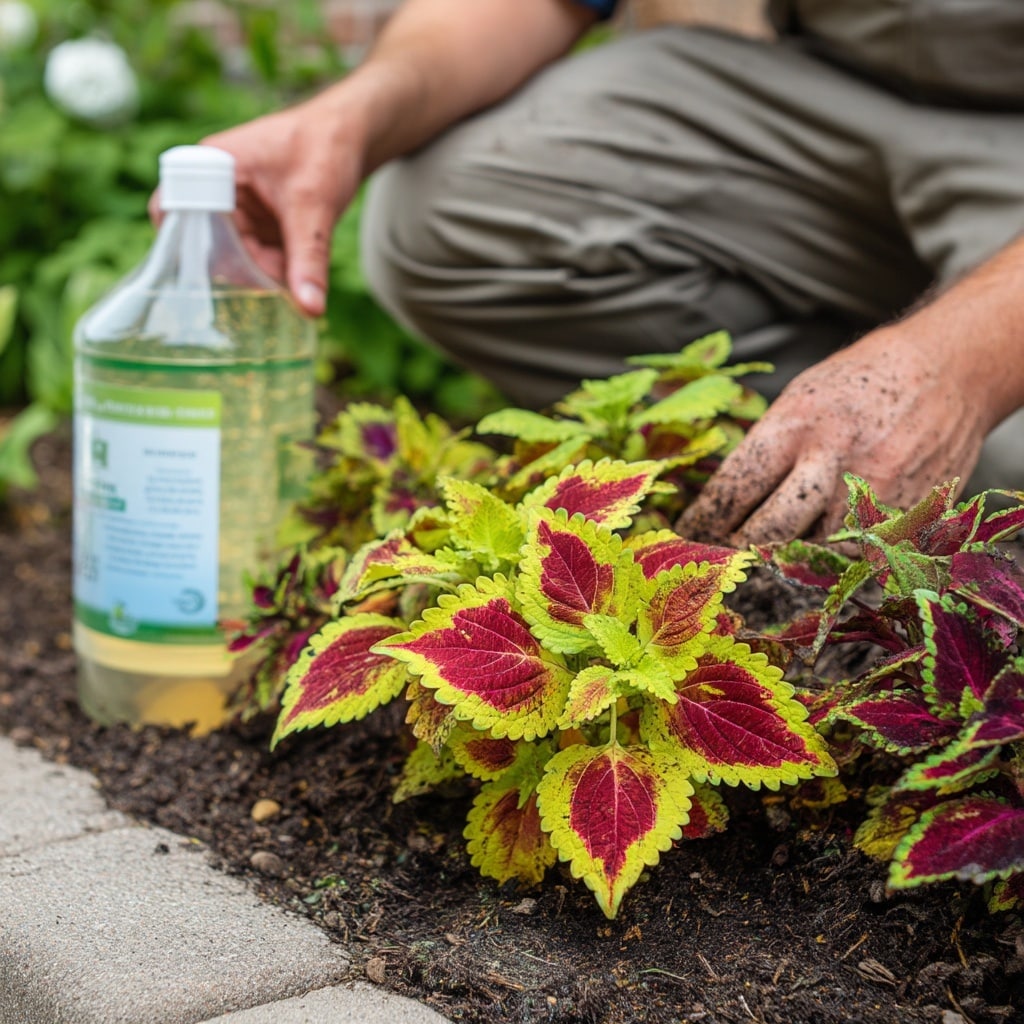
Feed coleus plants monthly during the growing season using a balanced, water-soluble fertilizer. Choose one with lower phosphorus (the middle number) to encourage leaf growth rather than flowering. Too much fertilizer can cause excessive growth that becomes leggy, so use a light hand. Always water after feeding to distribute nutrients evenly.
Common Problems and Pests

Coleus are relatively low-maintenance, but they can face a few issues. Overwatering and poor drainage are common causes of root rot. Pests such as aphids, spider mites, and whiteflies may appear, especially indoors. Treat infestations early with insecticidal soap or neem oil. Yellowing or wilting leaves usually indicate watering problems or a sudden temperature shift.
Growing Coleus From Seed

Starting coleus plants from seed is a rewarding way to grow a wide variety of vibrant foliage at a low cost. It also gives you the flexibility to start them early indoors, well before planting time.
When and How to Start Seeds
Begin seeds indoors about 8 to 10 weeks before your last expected spring frost. Coleus plants need warm soil—around 70°F (21°C)—to germinate properly. Use seed trays or small pots filled with a light, moist seed-starting mix. Scatter the seeds on top of the soil and lightly press them in; they need light to germinate, so don’t bury them.
Creating the Right Environment
Cover your seed trays with plastic wrap or a humidity dome to retain moisture and warmth. Place them in a bright, warm spot or under grow lights for best results. Keep the soil consistently moist but not soggy. Germination typically takes 14 to 21 days.
Transplanting Seedlings
Once the seedlings have grown their first true leaves and the risk of frost has passed, harden them off by gradually introducing them to outdoor conditions. Transplant them into containers or garden beds with good drainage. Give each plant room to grow—coleus plants can spread up to 3 feet wide, depending on the variety.
Pruning Coleus Plants
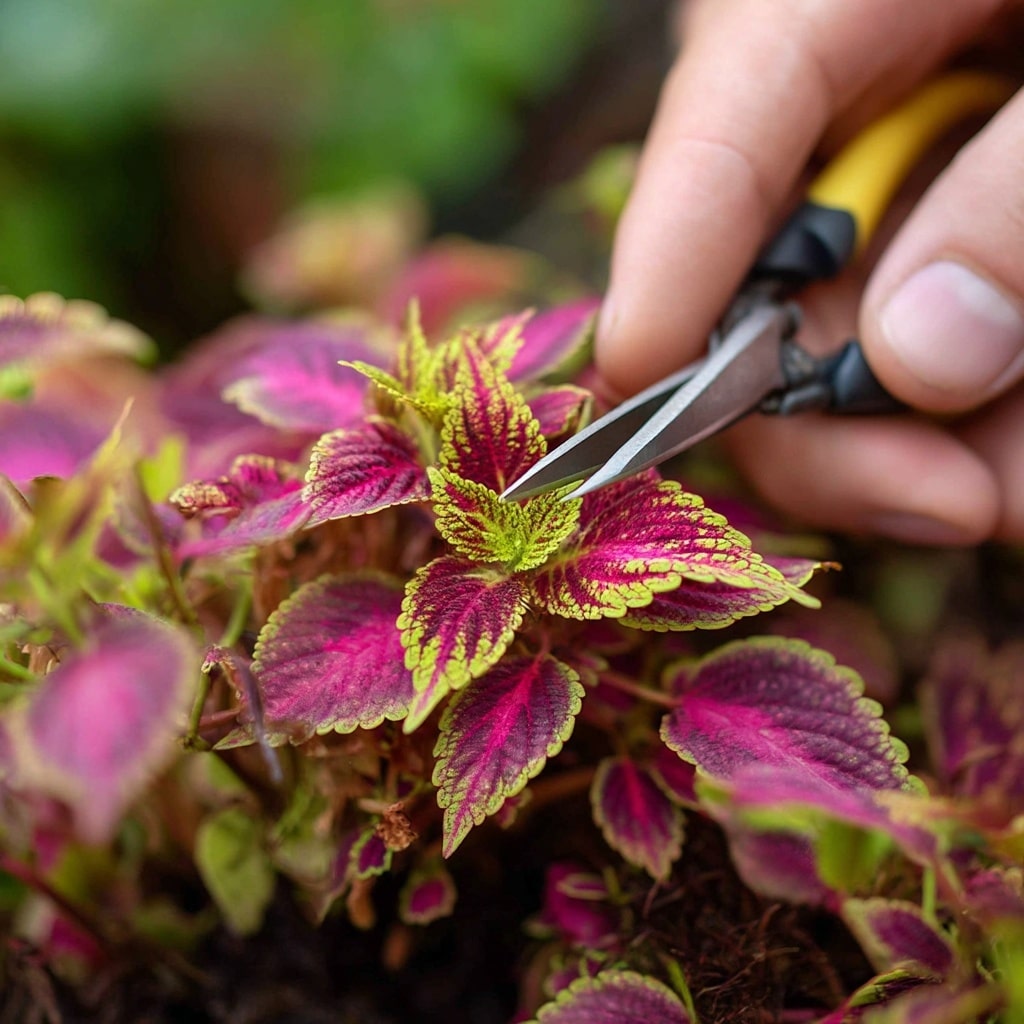
Regular pruning is one of the easiest ways to keep coleus plants looking lush and compact rather than tall and leggy. Without trimming, they can become sparse and overgrown—especially in containers or shaded areas.
When to Start Pruning
Begin pruning when your coleus plants are about 6 inches tall. Use clean scissors or your fingers to pinch off the top set of growing tips, just above a leaf node. This encourages branching, which results in a bushier, more attractive plant.
Ongoing Maintenance
Continue pinching back new growth every couple of weeks during the growing season. If stems become too tall or bare, cut them back more aggressively to promote new side shoots. Even just a light trim can refresh the shape and density of the plant.
Managing Flowers
While coleus plants can produce small, bluish flowers, most gardeners remove them. Flowering can signal the plant to stop growing leaves and enter the end of its life cycle. Pinch off flower spikes as soon as they appear to direct the plant’s energy back into its foliage, which is the real showstopper.
Propagating Coleus
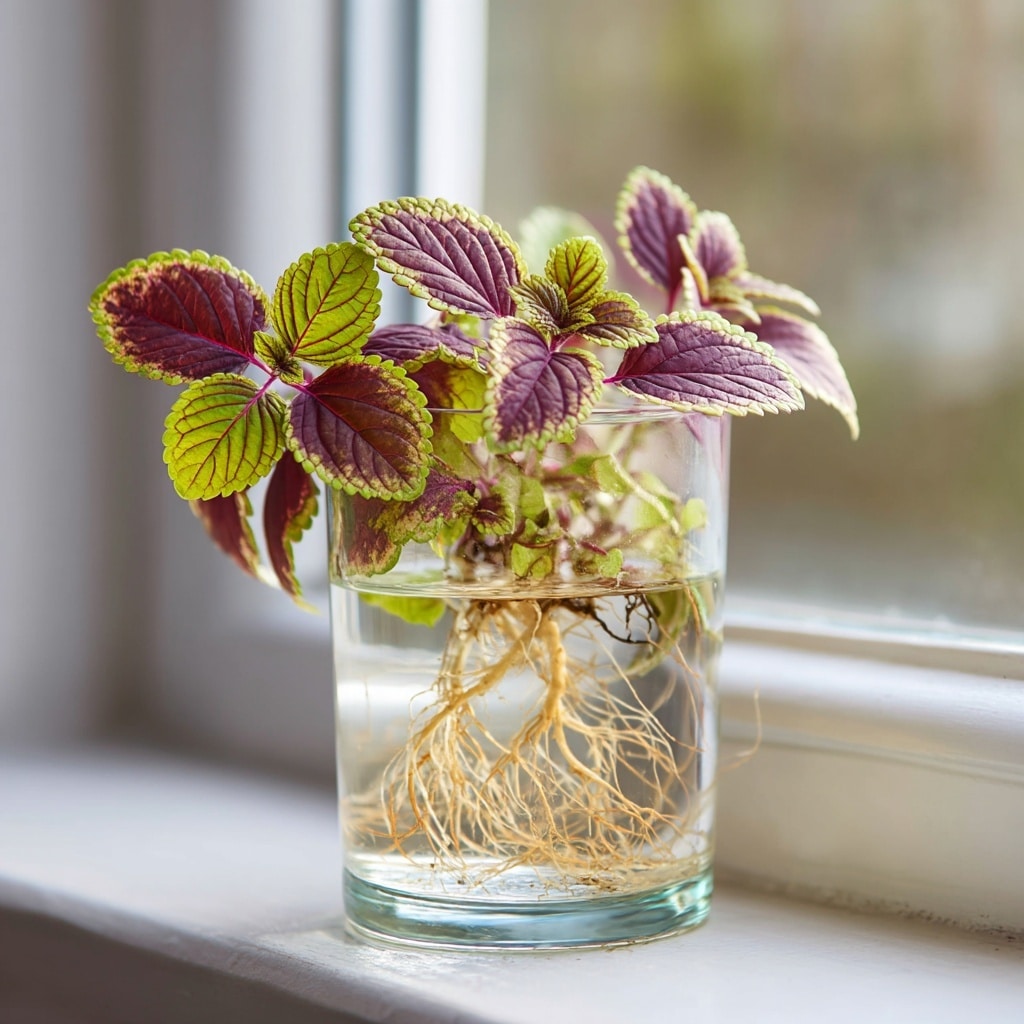
Coleus plants are incredibly easy to propagate, making them a favorite among home gardeners who want to expand their collection or share plants with friends. You can grow new coleus from either stem cuttings or seeds, depending on your preference.
Propagation by Cuttings
Stem cuttings are the fastest and most reliable method. Snip a healthy stem just below a leaf node, ideally 4 to 6 inches long. Remove the lower leaves, then place the cutting in a glass of water or directly into moist potting mix. If rooting in water, change the water every few days to prevent rot.
Roots usually form within 1 to 2 weeks. Once the cutting has a good root system, transplant it into a pot or garden bed with well-draining soil. This method works year-round indoors or in warm months outdoors.
Starting from Seeds
While growing from seed is slower, it’s great for experimenting with different coleus varieties. Start seeds indoors in late winter, as mentioned earlier, and keep them warm and moist. Once seedlings are strong enough, transplant them carefully and treat them as you would mature coleus plants.
Repotting Coleus
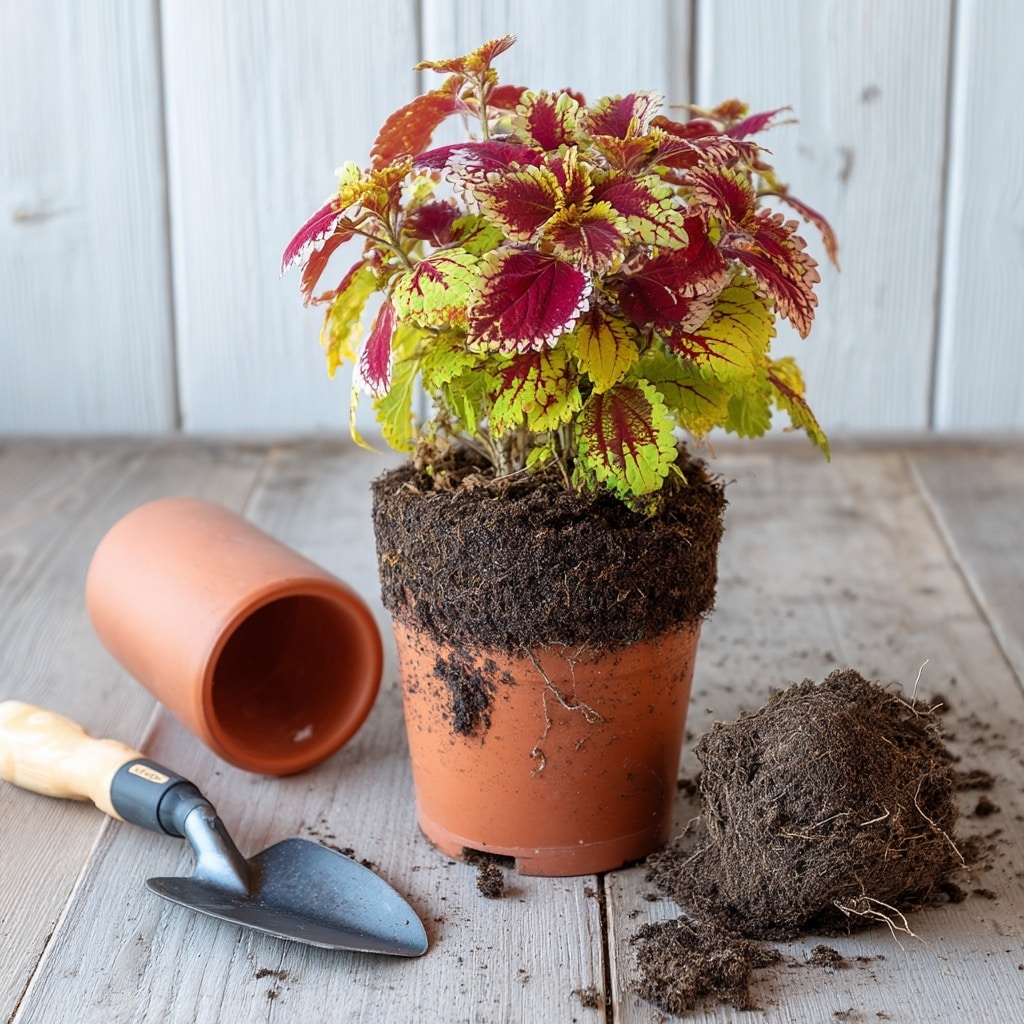
Container-grown coleus plants can grow quickly, often outgrowing their pots in just one season. Repotting ensures the plant has enough room for its roots, stays healthy, and continues producing vibrant foliage.
When to Repot
The best time to repot coleus plants is in spring or early summer, when they’re actively growing. Signs your plant needs repotting include roots poking out of the drainage holes, slowed growth, or soil that dries out too quickly. You can also repot if the plant simply looks too large for its current container.
How to Repot Properly
Start by watering the plant a few hours before repotting. Gently remove it from its current container, taking care not to damage the roots. Place it in a pot that’s 1 to 2 inches larger in diameter, using fresh, well-draining potting mix. Press the soil lightly around the base and water thoroughly.
For best results, place the repotted coleus in a shaded area for a few days to help it recover from the transplant shock.
Overwintering Coleus
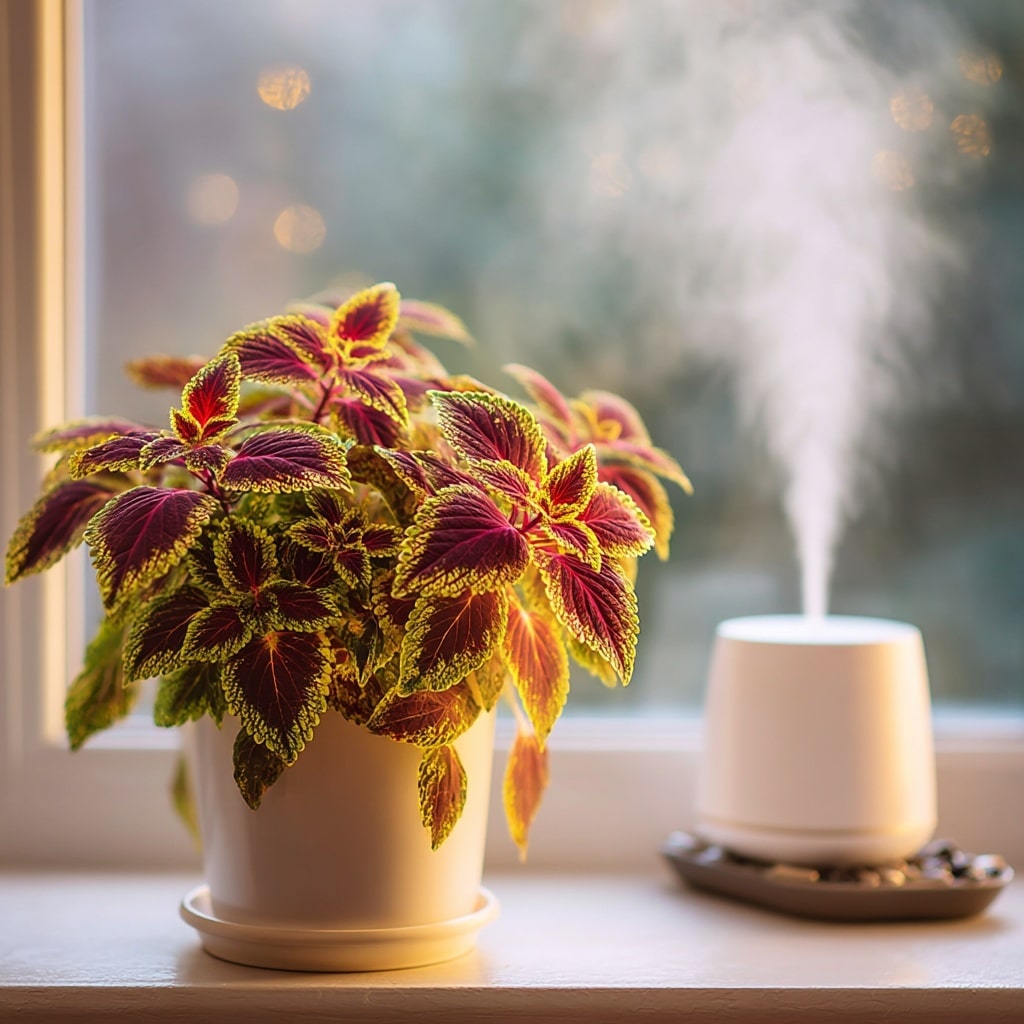
Since coleus plants are tender tropicals, they won’t survive frost or freezing temperatures. But with a little planning, you can keep them alive through winter by overwintering them indoors or saving cuttings for spring.
Bringing Plants Indoors
Before the first frost, move potted coleus plants inside. Choose a warm location with bright, indirect light—like a sunny windowsill. Avoid placing them near drafts or heat vents. Reduce watering slightly during winter, but don’t let the soil dry out completely. Misting or using a pebble tray can help maintain humidity.
Taking Cuttings for Spring
If you don’t want to bring the whole plant indoors, take several stem cuttings in fall. Root them in water or moist soil, then grow them on a windowsill through the winter. These young plants can be transplanted outdoors after the last frost in spring, giving you a head start on next year’s garden.
Popular Coleus Varieties

Thanks to their bold patterns and wide range of colors, coleus plants come in dozens of eye-catching varieties. Whether you’re looking for something dramatic, classic, or playful, there’s a cultivar to suit every style.
Here are some standout favorites:
Alabama Sunset
A timeless choice with red and yellow-green leaves. This variety tolerates more sun than most and adds warmth to garden beds or containers.
Dark Star
With nearly black foliage, Dark Star makes a dramatic statement. Its deep purple leaves contrast beautifully with lighter plants and flowers.
Fishnet Stockings
This variety features green leaves with intricate red-purple veining, mimicking the look of mesh or lace. It’s a unique choice for shaded spots.
Inferno
As the name suggests, Inferno brings fire to the garden with its intense orange-red foliage. It thrives in partial sun and adds a bold pop of color.
Kong Series
Known for their oversized leaves, Kong varieties come in multiple colors and perform best in full shade. Great for creating impact in large containers.
Red Ruffles
Red Ruffles offers ruffled, vibrant red leaves edged in green. It’s compact and ideal for borders or as a filler plant in mixed containers.
Wasabi
Bright chartreuse leaves make Wasabi a standout, especially when paired with darker foliage. It adds a fresh, citrusy contrast to any display.
Frequently Asked Questions

How Long Do Coleus Plants Last?
In most regions, coleus plants are grown as annuals because they can’t survive frost. Outdoors, they’ll last from spring to the first hard frost. However, if you bring them indoors or propagate cuttings before winter, they can live for several years as houseplants or be replanted outdoors in the next season.
Can You Keep Coleus Indoors Year-Round?
Yes! Coleus plants adapt well to indoor conditions as long as you give them what they need: a warm spot with indirect sunlight, regular watering, and some added humidity. They make excellent houseplants and can brighten up windowsills or shaded corners with their vibrant foliage.
If indoor air is very dry, mist the leaves occasionally or place the pot on a tray filled with water and pebbles to increase moisture around the plant.
Conclusion
Coleus plants are a colorful, low-maintenance addition to any garden, patio, or indoor space. With just a little attention to their light, water, and soil needs, they reward you with stunning foliage all season long. Whether you’re starting from seed, rooting cuttings, or growing them indoors through winter, these tropical beauties are as versatile as they are vibrant. With so many unique varieties available, you’re sure to find a coleus that suits your style and space.


